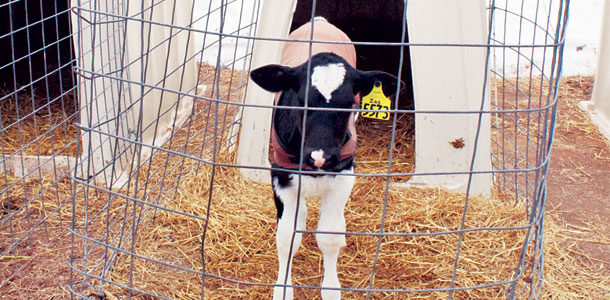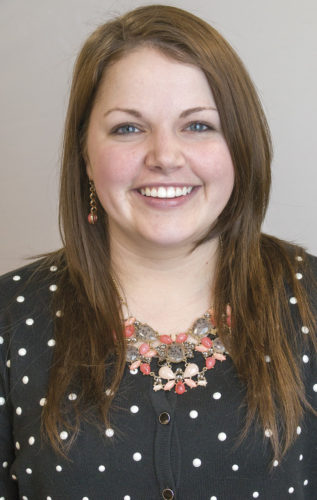As part of a new format for the annual Dairy Calf & Heifer Association Conference, which had a theme this year of “Be A Driver of Change,” conference organizers had a renewed focus on hands-on learning. The conference offered two afternoons of bus tours, with additional presentations at each of the four stops. Read on for some key takeaways from the tours.
Calf Source, a division of Milk Source, in De Pere, Wisconsin, has the capacity to raise 10,000 calves. The operation recently invested more than $2 million in facility and system upgrades, including a scanning system to ID and record calves upon arrival. Records are kept in DairyComp, and calves are weighed and monitored by groups before they’re moved to Heifer Source in Kansas.
Safety Director Juan Quezada gave attendees a glimpse of the protocols in place for employees with the Milk Source company. Every employee must receive certification and receive regular safety training.
“We also have a ‘See It, Stop It’ pledge in place,” Quezada said. “Employees are required to report an incident as soon as they see it. They can’t wait four or six weeks.”
Engineer and veterinarian Ryan Leiterman of Crystal Creek gave attendees some points to consider when building or retrofitting calf facilities. He urged growers to focus on the ventilation at the bottom four feet of the barn – where the calves breathe.
When it comes to curtain sidewalls, Leiterman says the best option is a curtain that rolls up from the bottom and rolls down from the top to meet in the middle. Conversely, the cheapest and least desirable curtain is one that opens from the top down.
He advises that producers stick to lower solid (concrete) sidewalls, no higher than two feet, with the ideal size being 12 to 18 inches.
The tour stop at Calf Source also included a presentation on sanitation from Dr. Skip Olsen of Milk Products and tips on disease prevention from Dr. Kelly Peters of Countryside Vets.
The second stop of the day featured Green Valley Dairy in Krakow, Wisconsin. The started calf facility, which can house 1,640 calves, utilizes three-sided buildings with slatted floors over a 10-foot pit. Manager Paul Jacobs says the pit was purposely overbuilt to ensure environmental compliance.
Chris Horton of Digi-Star showcased NIR (Near Infra-Red) technology with the company’s Moisture Tracker device. While the new technology allows producers to react to changes in dry matter and adjust the ration accordingly, Horton pointed out several items to keep in mind when using the device.
First, measure the materials to be fed that day. The sample being pulled should be representative of the whole load to be fed, so try to pull from different places of the bunkface. Scan about 20 spots in the material, making sure to move the device around the pile and take measurements from the both the bottom and the top of the pile.
Horton says it should take about one minute to get 20 scans on the device. The information is stored on a jump drive and downloadable into an Excel spreadsheet.
Similar devices can range from $5,000 to $40,000, but Digi-Star’s tracker typically retails for about $7,000, Horton said.
“These devices aren’t designed to replace lab analysis,” he said. “These supplement a lab and can get you immediate, proactive data to be able to make decisions.”
This tour stop also included presentations on manure as a potential revenue stream with Peter Westra of Hull Coop Association and how to perform a TMR Audit with Kristy Pagel of Diamond V.
A second afternoon of tours had attendees tour Genex Cooperative facilities in Shawano, Wisconsin. Genex employees showcased bull collection facilities, described how the semen is tested and processed and opened up their new distribution site.
The fourth tour stop of the conference featured Synergy Dairy in Pulaski, Wisconsin. A new calf facility was built in 2010, which enabled the Olson and Jauqet families to bring their heifers back home after their custom grower decided to start dairying again. The operation has a focus on high-quality genetics and markets embryos abroad, including Italy, China and Japan.
On-farm presentations included deciding factors on breeding from David Schroepfer of Alta Genetics and the proper timeline of feeding through six months from Dan Schnell of United Cooperative.
Dr. Don Sockett of the Wisconsin Veterinary Diagnostic Laboratory also shared his frank thoughts on recent research of 2X vs. 3X feeding.
“It was innately obvious to every [human] mother in our facility that calves would do better with being fed more often,” Sockett said.
His research found that the third feeding didn’t add a lot of extra labor but all of the calves on 3X feeding were taller with a bigger frame size.
“They were friskier, healthier, better calves,” Sockett said.
A surprising discovery in the research was how much calf-to-calf variability exists in starter grain intake. His team found intake “very inconsistent” day-to-day in both the 2X and 3X groups.
When asked about future research for his team, Sockett pointed to the field of epigenetics and studying long-term effects as being an exciting time for the dairy industry.
“It’s a whole new field of genetics,” he said. PD
Find more information online about the Dairy Calf & Heifer Association , including social media links to conference coverage.
PHOTO
A common theme of this year’s DCHA Conference was how Midwest calf growers handled a particularly long and harsh winter. Several dairies, like Synergy Dairy, discussed calf jackets and proper bedding. Photo by PD Editor Emily Caldwell.

Emily Caldwell
Editor
Progressive Dairyman





